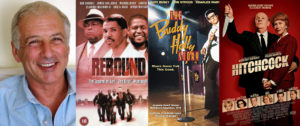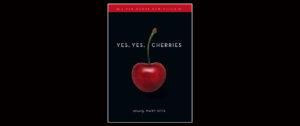Reviewed by James Victor Jordan-Four Stars.
Chronicle of a Death Foretold:
Yes, the title of this review does invite a comparison of the Gabriel García Márquez novel of the same name to John O’Hara’s first novel, Appointment in Samarra, in that the title of Chronicle and the parable by W. Summerset Maugham that prefaces Samarra foretell the death of a major character. This is a close-ended story structure, which is unlike an open-ended structure where an outcome is unknown to the reader at the outset. The first-time reader of Chronicle and the first-time reader of Samarra will know that the plot includes a death but won’t know how it will happen or its significance. In Chronicle there is a murder; in Samarra, a suicide. In Chronicle there is a journalistic investigation undertaken to solve the murder: who did it and why. In Samarra there is perhaps epiphany, maybe acceptance and resolution. The reader learns about the surviving characters’ immediate reaction to the suicide but nothing more as this is where the story ends.
The comparison of these novels cannot extend beyond the recognition of their shared close-ended structure. Chronicle is richly textured. It is predicated upon unique and antiquated cultural norms, a crime of passion, a journalistic inquiry in a closed society, and bureaucratic obstacles and obfuscation common to the culture. The writing, as one would expect of García Márquez, is world-class. Chronicle is a novel that richly deserves its place in the canon.
Unlike Chronicle, which continues to appear on collegiate undergraduate and graduate English-literature reading lists—it was assigned reading for me in graduate school just 15 years ago—and is to this day widely read, Samarra, like O’Hara’s other novels and stories, has largely disappeared from the radar of the reading public, having until its recent resurrection by Penguin Classics under the editorship of Charles McGrath, gone out of print.
Arguably, Samarra takes place in a culture antiquated to ours, but its characters are ordinary people easily recolonized as such in our modern times. They lead ordinary lives that are largely governed by contemporary norms. It is because of their ordinariness that hidden and unexpected aspects of various characters’ personalities come to light, but not in any profound, meaningful, or surprising way. This is a strength and a weakness of ordinary realistic literary fiction, the genre in which Samarra must be placed.
The principal characters in Samarra are Julian English and his wife Caroline. They are members of the country-club set in Gibbsville, a fictional small Pennsylvania town modeled upon O’Hara’s own hometown of Pottsville, Pa. in much the same way that William Faulkner based his fictional Mississippi County, Yoknapatawpha, upon an actual county: Lafayette.
Julian, the son of a prosperous physician, owns and manages the Gibbsville Cadillac dealership. The hoi polloi of this part of eastern Pennsylvania are coal miners, unlikely during the Depression to patronize a luxury automobile dealership. Caroline is a socialite. She is 30; Julian is 28. The story begins Christmas Eve 1939 and ends after nightfall on Boxing Day, roughly forty-eight hours later.
Late Christmas Eve, the Englishes are at their country club, the Lantenego, and Julian is predictably drunk. He is irritated with Harry Reilly, a wealthy patron of his. Reilly is not only a well-established, well-connected member of elite Gibbsville society but is also a prominent member of the local Irish Catholic community. At the Christmas Eve country-club party, Reilly is carrying on and on and on with longwinded anecdotes and humorless jokes. Finding Reilly to be tedious at best, Julian thinks about throwing a cocktail in his face. And then, in the novel’s first moment from which there is no turning back, he does, giving Reilly a terrific black eye.
This extreme faux pas would likely have blown over with time, with Julian expressing appropriate remorse and humility. The next day, when Julian shows up at Reilly’s office to apologize, Reilly is dismissive because he’s short on time, but he is not angry or vindictive. Reilly may be banal, but he has class. Nonetheless, for Caroline, Julian throwing the highball in Reilly’s face is a bridge too far. She tells Julian that they are ruined, that they will be driven from Gibbsville high society. Then she tells Julian she is leaving him, only to relent when he promises not to get drunk that night at the country club Christmas party. This brings about a loving if not passionate rapprochement. That night, when they arrive at the Christmas party afterparty, Caroline agrees that later she will sneak out with Julian and fool around with him in the backseat of their car, as they had in earlier times.
But later, when Julian propositions his wife, she tells him she’s no longer in the mood. That might be because Julian has become obviously intoxicated. The result of this rejection is that Julian embarks upon an even more egregious drunken tear, ending when he escorts a dancer, the girlfriend of the local bootlegger, out to his car, where he passes out. When Caroline and friends awaken Julian in the car, he doesn’t remember if he’d had sex with the dancer.
The next night, the Englishes had planned a Boxing Day high-society party. But in the morning, they quarrel again, and Caroline threatens to cancel the soiree. During that day Julian comforts himself with the thought that he has devoted friends, who will stick by his side until his troubles with Reilly have passed. One of these friends is Captain Froggy Ogden, a man ten years older than Julian, a man who has lost an arm in the war. Froggy is also Caroline’s cousin.
Later, while Julian is alone at lunch at the country club, an angry Froggy confronts him. Froggy is furious about the drink thrown in Reilly’s face but even more livid about Caroline’s humiliation the night before. Froggy tells Julian that he has always despised him and had opposed Caroline’s marriage to him. Despite his disability, Froggy challenges Julian to a fist fight. Julian has been drinking. The situation gets out of hand, and Julian does lay Froggy low.
The reader and Julian must now wonder, does Julian have or did he ever have any true friends?
An English divorce now appears to be inevitable and indeed when Caroline learns about what Julian has done to Froggy, she informs him that the party scheduled for that night at their home will be canceled and that the marriage will be terminated as well. Later that night Julian, who must have achieved a near lethal blood-alcohol level, commits suicide in his garage by carbon monoxide asphyxiation.
The Samarra plot is not the stuff of which novels such as Chronicle are made. Yet I give Samarra four stars because at times it does shine, it is smart, and it reveals interesting and worthwhile aspects of its place and time—Gibbsville in1930—and its characters. Small revelations about ordinary characters, such as Froggy’s surprising admission of disdain if not hatred for his pal Julian, are the fabric from which realistic literary fiction is sewn. But it is difficult to imagine that such a plot could form the basis of a virtuoso novel, which Samarra definitely is not.
Another comparison, this one to The Great Gatsby, cannot be ignored because that comparison—favorable to Samarra—is made by Charles McGrath in his lengthy introduction to the Penguin Classics edition of Samarra that he edits. Mr. McGrath writes that the relationship between Julian and Caroline, “is more convincing and more satisfying than that of Gatsby and Daisy.” While Samarra relates class distinctions in small-town Pennsylvania in 1930, Gatsby tells a much larger story on a much larger stage (and in fewer pages). The romance of Gatsby and Daisy is as singular and iconic as the romance of Romeo and Juliet.
Julian and Caroline? There is no mention of romance. They seem to have married after exhausting the other possible options. If there had ever been magic in their relationship, it is well hidden from the reader. Julian was not the romantic love of Caroline’s life. Star-crossed, from her viewpoint, she and Julian are not. She will divorce Julian and good riddance to him. There is no evidence that she felt sad by the thought of leaving him. Her life will be just fine without him. The marriage, only two-years old has lasted as long as it has only because of the profound disfavor of divorce in elite Gibbsville society.
Gatsby is a novel for the ages while Samarra is noteworthy largely in the context of its own age. The literary style, the prosody of Gatsby is stunning. It is difficult to identify a novel with more lyrical prose. The prose in Samarra isn’t bad, but there are no breathtaking sentences or unforgettable phrases. Gatsby is resplendent with gems that illuminate, enlighten. Consider Jordan Baker telling Nick Carraway, “I like large parties. At small parties there isn’t any privacy.” Or of Gatsby saying of Daisy in Chapter VII, “Her voice is full on money.”
This is not to say that there aren’t bright and memorable moments in Samarra, though not moments of insight. In places its dialog is excellent. Consider this brief passage from the middle of the novel, Chapter 6:
Julian English, in his cups: “I simply don’t want to buy drinks, Al. If there’s anything I don’t want to do it’s to buy a drink. I’ll buy you a drink. I’ll buy—oh, that man over there, I’ll buy him a drink. But I don’t want to buy a drink. See what I mean?”
Al: “No, I don’t see exactly what you mean, Mr. English.”
Julian: “Just call me Mr. English, Al. You call me Mr. English and I’ll call you Al. The hell with this formality. We’ve known each other all our lives.”
Gatsby tells a story larger than Nick Caraway’s summer living in West Egg. Gatsby is the Great American Novel, the American story of rags to riches, the American myth of equal opportunity and possibility wrapped in a love story for the ages. While no novel tells of this fictional American birthright better than Gatsby, Samarra is an ode to the limitations of class distinctions in its time and place. It is an ode to the pathos of alcoholism. It conveys a warning about excessive drinking that should not be forgotten. But it is not a story that is eternal.
In The Poetics Aristotle wrote that the best writing shines because of the use of metaphor, saying: “To be a master of metaphor is the greatest thing by far. It is the one thing that cannot be learnt from others, and it is also a sign of genius.” I don’t agree that mastering metaphor cannot be learned, but when I read prose with startling, delightful metaphors, I do feel as if I’m in the company of a genius author, in the company of an author who will lead me to enlightenment and enrichment.
In Gatsby it’s unusual to find a paragraph without a stunning metaphor. In the opening chapter of Gatsby, for example, Nick Carraway says, “I bought a dozen volumes on banking and credit and investment securities, and they stood on my shelf in red and gold like new money from the mint, promising to unfold the shining secrets that only Midas, and Morgan, and Maecenas knew.”
At night, looking east over Long Island Sound toward East Egg, Gatsby sees the green light shining at the end of the Buchanan’s dock: the green light of hope and yearning. And traveling from West Egg to Manhattan Nick sees on a gigantic billboard the eyes of Dr. T. J. Eckleburg, “eyes dimmed a little by many paintless days under sun and rain, brood on over the solemn dumping ground,” “bounded by a foul river” “a dismal scene” where Nick first meets Tom Buchanan’s mistress, Myrtle Wilson. This scene is situated at a train depot overlooking, as Dr. T. J. Eckleburg does, a Valley of Ashes beside a foul river, the subtle foreshadowing renders this scene dismal. Foreshadowing is not a literary virtue found in Samarra beyond its prophetic title, its inevitable conclusion.
The use of metaphor in Gatsby is a hard act to follow. How does Samarra manage it? The title alludes to death being inescapable. But I don’t find the title to be particularly apt. It alludes to death being ultimately inescapable. It’s arguable at best whether Julian’s suicide was preordained. I didn’t find a memorable metaphor in the novel. Everything is neatly spelled out, squeezing out room for a playground of the imagination.
Good writing invokes the senses: sight, sound, taste. Thus a comparison of hot weather in the two novels illuminates the relative quality of the writing in each. From chapter 5 in Samarra.
“The heat was awful; it got up her nose, and everyone whose eyes met hers had a silly smile on his face that seemed to apologize for the weather.”
From Gatsby Page 114, chapter VII
“The next day was broiling, almost the last, certainly the warmest of summer. As my train emerged from the tunnel into sunlight, only the hot whistles of the National Biscuit Company broke the simmering hush at noon. The straw seats of the car hovered on the edge of combustion; the woman next to me perspired delicately for a while into her white shirtwaist, and then as her newspaper dampened under her fingers, lapsed despairingly into deep heat with a desolate cry. . ..
“‘Hot!’ said the conductor to familiar faces. ‘Some weather! . . . Hot!. . . Hot!. . . Hot!. . . Is it hot enough for you? Is it hot? Is it . . .?’”
Samarra doesn’t do much to describe the physical appearances of its characters. The reader isn’t told what Julian looks like. More is said about the appearance of Caroline as she has her own backstory chapter. Froggy Ogden had one arm. Al Grecco, a memorable character, is physically described: short, sparkplug like, pugilist. Lute Fliegler is not physically described. His wife Irma has a slight roll of fat around her midsection. But could the reader would be sure to recognize her on the street?
The physical description of the characters in Gatsby is stunning. Tom Buchanan: “. . . he was a sturdy straw-haired man of thirty with a rather hard mouth and a supercilious manner. Two shining arrogant eyes had established dominance over his face and gave him the appearance of always leaning aggressively forward. . .you could see a great pack of muscle shifting when his shoulder moved under his thin coat. It was a body capable of enormous leverage—a cruel body.”
Daisy had a “low trilling voice. It was the kind of voice that the ear follows up and down, as if each speech is an arrangement of notes that will never be played again. Her face was sad and lovely with bright things in it, bright eyes and a bright passionate mouth, but there was an excitement in her voice that men who had cared for her found difficult to forget.”
Jordan Baker “was a slender, small-breasted girl, with an erect carriage that she accented by throwing her body back at the shoulders. Her gray sun-strained eyes . . .” And later, she had “a hard, jaunty body.”
In Gatsby Fitzgerald uses physical descriptions to reveal personality and character. In Samarra, O’Hara does not.
In Samarra the reader is treated to surprise. In part II of chapter one when we meet Julian, the passage written in the subjunctive tense. What would happen, Julian thinks, if he were to throw a drink in the face of Harry Reilly? “‘And I would like to say’, Julian said to himself, ‘that I thought it was time someone shut him up.’ But he knew he would not throw this drink nor the fresh drink he was about to mix.” And then at the end of this section of the chapter “. . . Johnny Dibble suddenly appeared, breathless at the place where his cronies customarily stood. . . ‘Julian English. He just threw a highball in Harry Reilly’s face. Jeest!”
In Gatsby the reader is treated to surprise and delight. Chapter III “By seven o’clock the orchestra has arrived . . . the bar is in full swing, and floating rounds of cocktails permeate the garden outside, until the air is alive with chatter and laughter . . . The lights grow brighter as the earth lurches away from the sun, and now the orchestra is playing yellow cocktail music, and the opera of voices pitches a key higher. . . . already there are wanderers, confident girls who weave here and there among the stouter and more stable . . . excited with triumph glide on through the sea-change of faces and voices and color under the constantly changing light.
“Suddenly one of these gypsies, in trembling opal, seizes a cocktail out of the air, dumps it down for courage and, moving her hands like Frisco, dances out alone on the cavass platform. . . . There is a burst of chatter as the erroneous news goes around that she is Gilda Gray’s understudy from the Follies. The party has begun.”
As Mr. McGrath asserts—is the Julian and Caroline relationship more convincing than the relationship of Gatsby and Daisy? It is not hard to believe that Caroline will leave Julian because he doesn’t quit drinking as he promised. Or because of the adultery. Or because he beat the hapless Froggy Ogden. The Gatsby-Daisy relationship is not so pedestrian, to say the least. This is nowhere more evident than in the last scene in Manhattan with Gatsby, Daisy, and Tom together, where she breaks down and tells Tom that she does love him. But does she? If she hadn’t run down Myrtle, we might have found out.
Gatsby is set during the roaring Twenties. The reader sees this as it’s described with remarkable verisimilitude: Gatsby’s parties, his mansion, the Buchanan’s wealth. Samarra is set during the depression. There are references to the finances possibly being tight. Yet Julian remodels his Cadillac dealership in mid-1930 after Harry Reilly has no qualms about lending him the money to do so. Caroline, concerned about finances, tells Julian that he must return a fabulous bracelet he’s given her for Christmas. He insists they can afford it. The reader doesn’t see the bank closures, depression-era layoffs—the unemployment rate was 25%—or the suffering in a near bankrupt nation. During the depression, starving unemployed Pennsylvania coal miners resorted to bootleg coal mining, the only way they could eke out a subsistence. No character in the novel reflects upon this.
I do recommend Samarra for the reasons I stated. And with deep respect for Mr. McGrath, for he is a scholar of literature and a respected writer for The New Yorker, while I am neither, I must leave it to the readers of this review to determine if I’ve made my case: comparing Samarra favorably to Gatsby amounts to book-review sacrilege.









































